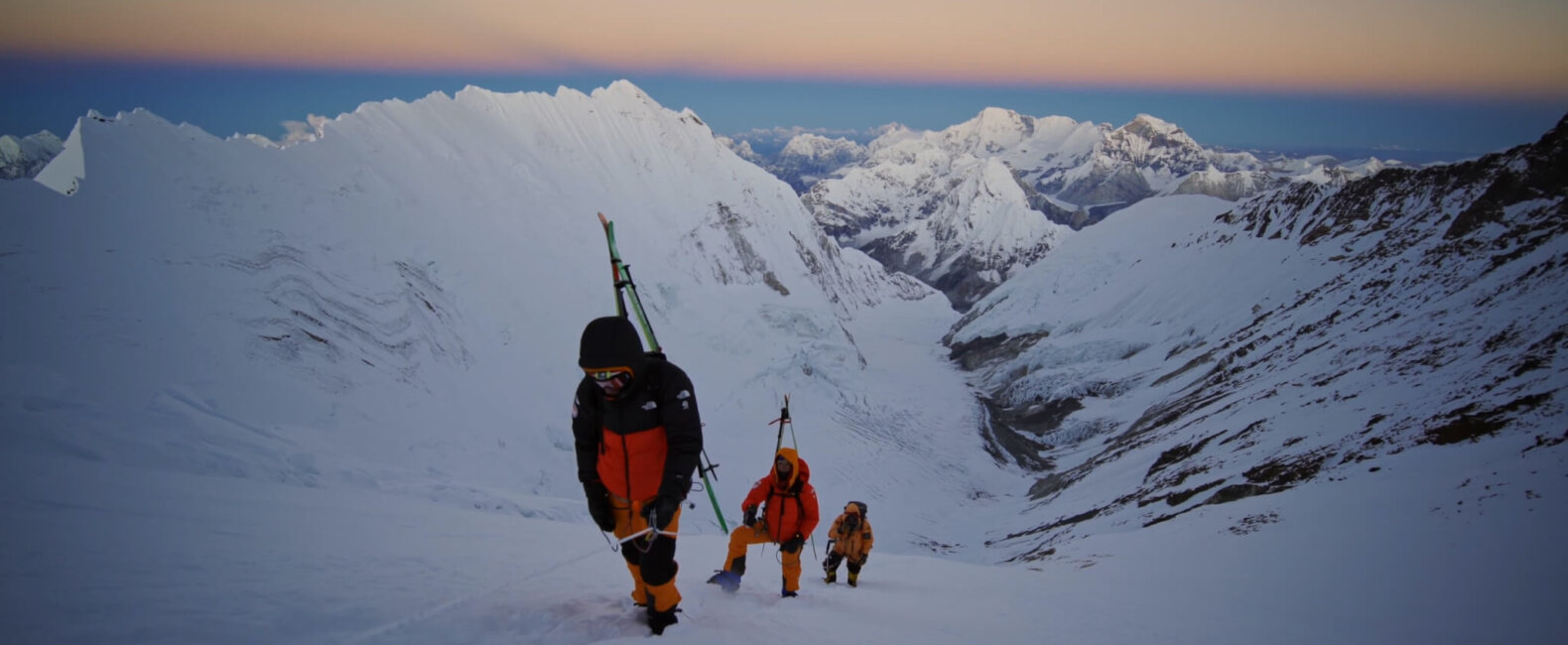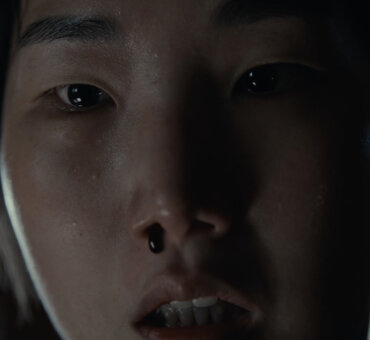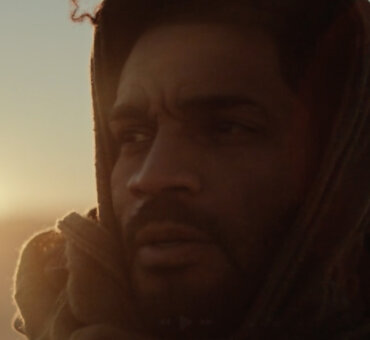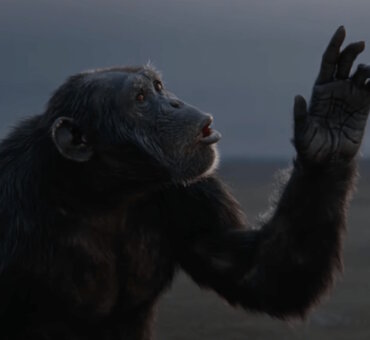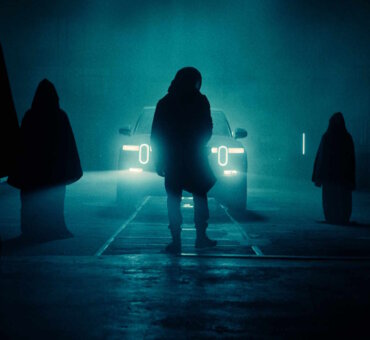We launched our Behind the Work series to feature incredible filmmakers and the skills required to produce great content. In season two, we’re revealing the creative processes that precede these filmmakers’ work.
For Episode One, we spoke with The North Face’s creative team about their short film Lhotse, and we noticed gems throughout. In between anecdotes of avalanches and 8,000-meter summits, there were so many branded content truths that extended beyond this particular project. It takes a lot of skill and experience to produce a film like this one successfully, and we want to share these takeaways with you.
Here’s The North Face’s creative team on what it takes to make a film like Lhotse.
1. Listen to the Project
Sometimes, as a leader, you have to be aware enough to know what you’re working with to ride the whirlwind of creativity. For Kaki Orr, the Senior Global Creative Producer for The North Face, she knew that this attempt by Jim and Hilaree was going to be iconic. She also knew that her team was capable. So, they decided to let the project take them in the direction it needed to go.
“We originally had planned photography around it. The Lhotse project came together from the need to magnify it. I could feel the power behind what they were about to do. Hilaree and Jim are two of the foremost epic athletes; almost everything they do is worth documenting,” Kaki says.
But, something even more serendipitous happened—they connected with filmmakers Dutch Simpson and Nick Kalisz, who were up for the challenge of capturing this incredible journey. When they returned from the expedition, Kaki was just beginning to see the potential of this project:
“I just couldn’t believe that these guys have been at 30,000 feet, picking up their camera and getting the perfect frame. That was when it hit me—this is amazing. Even if this is all they got, it’s incredible. Then, more stuff started coming through. They got back down and were able to send some motion selects through. Then, I was chomping. I needed to see what they got. I was kind of having this freakout about the potential and where this could go,” she told us.
For projects like Lhotse, it takes a combination of creative potential and managerial foresight to just say “Yes.” If you think the story is going to be worthwhile, then do whatever it takes to make sure all of your bases are covered.
2. Your Subject Comes First
Let’s go back up the mountain for a minute. Before you even pick up a camera, everyone needs to be on the same page as to why this film is even happening. Lhotse is beautiful, but for The North Face and its team, the mountains are simply a backdrop for the people who are climbing them:
“What’s unique about The North Face is that they treat their athletes with such respect. It’s not like, ‘We have a marketing initiative; we want you guys to do this.’ It’s truly athlete-inspired. So the athletes will have this crazy idea—in Jim and Hilaree’s case, they want to go do Lhotse—and what’s rad about The North Face is that they’re like, ‘Yes. We want to support you. What do you need,’” Dutch told us. “Jim and Hilaree have been in the Himalayas, doing expeditions since the ‘90s. It’s just one of those lines that has never been achieved, but it’s the most obvious, beautiful line. Jim has even said he’s been reading about it since he was a kid. It’s been on a lifelong hit list for them.”
It’s those human moments that should drive a story; everything else just belongs on your sizzle reel. There are plenty of jaw-dropping moments in Lhotse, but the real inspiration comes when the filmmakers focus on the people who are dedicated enough to create those jaw-dropping moments. It takes a lifetime of dreams, training, and experience to make it happen, and those elements have to be the guiding light.
3. Set The Expectation
As for actually capturing the footage, it helped Dutch and Nick to have that guiding light, but when you’re at 8,000 meters, you need a little bit more than a good direction. You also need common sense. For these two filmmakers, they saw the story they needed to capture:
“Nick [Kalisz] and I were looking at it as Jim and Hilaree’s trip. It wasn’t about us summiting; it was about us trying to capture as much as we could,” Dutch told us.
“As much as we could” is the key phrase here. It’s one thing to have creative directors and producers casting vision from sea level, but it’s an entirely different thing to be capturing those images on the face of Lhotse. And, as you’ll learn in our Behind the Work feature, Nick and Dutch were still acclimating. So, they decided they were going to set clear expectations for the shoot: to capture one great scene a day and use the rest of the time trying to get back down alive.
“What we did was slow down the process. We knew it was going to be physically demanding, and in order to get the shots and the scenes that we needed, we knew we had to be pretty strategic about it,” Dutch says. “In the morning, Nick and I would group up and be like, ‘Alright, what’s the one scene we want to shoot today? Or the one thing that will make this a success?’ We changed our normal way of operating into one thing. We didn’t think we were going to make it that far. Expectations from Jim and Hilaree were, ‘If you can make it to Camp 2, then we’re happy with that.’ We just took it day by day.”
Let your project dictate what success looks like, not the other way around. For these two filmmakers, they were being asked to do something that’s never been done before—to capture something that’s never been done before—and it took everything they had to get it on film. It turns out that was more than enough.
4. Trust Your Team
Back down on the ground, The North Face’s team had already instilled that trust in these two filmmakers, which played out well after the expedition had finished:
“My final touch on the project was the full-court press, to have Nick and Dutch be the two who edited the film. That was probably my most important contribution, that these are the guys that we should trust with telling the story,” Kaki says. “I know they’ve got it. They’ve got a great relationship with Hilaree and Jim; they’ve got a great relationship with other athletes who can help contextualize the feat. They are the ones who’ve gotten this content together and they should be the ones to have the honor of putting the pieces together.”
You can’t have a team without trust, and when you’re producing films at the level of Lhotse, you need to have it baked into your DNA. From athletes to filmmakers to production and marketing, everyone needs to know that there’s full commitment and everyone’s qualified to be at the table.
Robert Wassmer, creative content manager for The North Face, explains this connection:
“The athletes are the heartbeat of the brand. There’s trust there mostly because we don’t know what’s possible and what’s not possible. We’re judging by what they tell us, ‘Hey, we feel comfortable and confident that we can do this.’ Kaki and I work really well together because there’s no ego between us. We know what each other excels at, and we know when to push and when to step back. It’s the same with Nick and Dutch. The way Dutch talks about doing this physical feat is like the way I talk about walking around the block. I’m like, ‘Dude, I appreciate you being humble, but what you did was insane. It’s great that we’re making a movie, but the fact that you’re here talking to me is great, and I’m happy.’ But, I started to realize that’s what makes him and Nick, and all the production people who we work with, that’s what makes them so special.”
It’s a beautiful combination of humility, trust, skill, and experience, where everyone is a servant to the project and nothing else. Whether you’re at 30,000 feet in the Himalayas or sitting in front of the timeline, it’s always key to have the right people for the job.
5. Make It Relatable
This production put people first. And we’re not just talking about superhuman athletes and dedicated filmmakers. We’re talking about the person watching the film as well. It’s one thing to capture this incredible feat and a whole other thing to make it relatable to your viewer. Robert explained that this perspective needed to percolate throughout to ensure the team never lost sight of the brand’s true purpose:
“I don’t know what it’s like to be at 8,000 meters. I don’t how it feels to have a calling to ski this specific couloir. But I know what it’s like to have a goal and go after a goal. I know what it’s like to have hardship and overcome hardship. Distilling these seemingly superhuman achievements into values that people understand and go through every day was really our approach to this story. We wanted to make it comprehensible. And by making it comprehendible, we wanted to show how extraordinary it was,” he says.
This is why brands like The North Face have found success. Create content for people, and you’ll never lose your way. No matter how unrelatable the achievement may appear, the feelings and stories leading up to that achievement are always going to be something that people can connect with. We’ll let Robert wrap up:
“Being able to tell stories that relate to the human condition through the lens of the outdoors and through general exploration, being able to do that on a broad scale for the masses, is an important thing that The North Face can be a part of.”
Just like the mountain, Lhotse may seem like an unachievable summit for many filmmakers. But the principles outlined here can apply to any project—let the story guide production, keep your characters upfront, set achievable goals, trust your team, and relate it to people. Once you have those goals in front of you, the summit, whatever that may mean for you, gets a little bit closer.
Watch our Behind the Work episode featuring Lhotse, or read our conversation with director Rayka Zehtabchi about pushing brands to be bold in their work.
